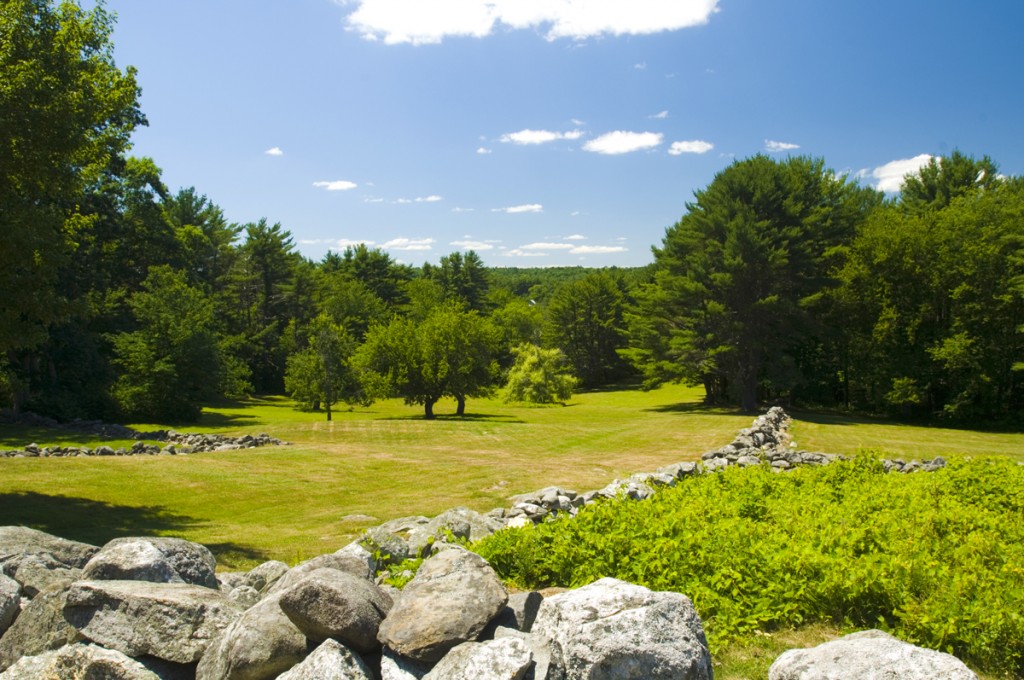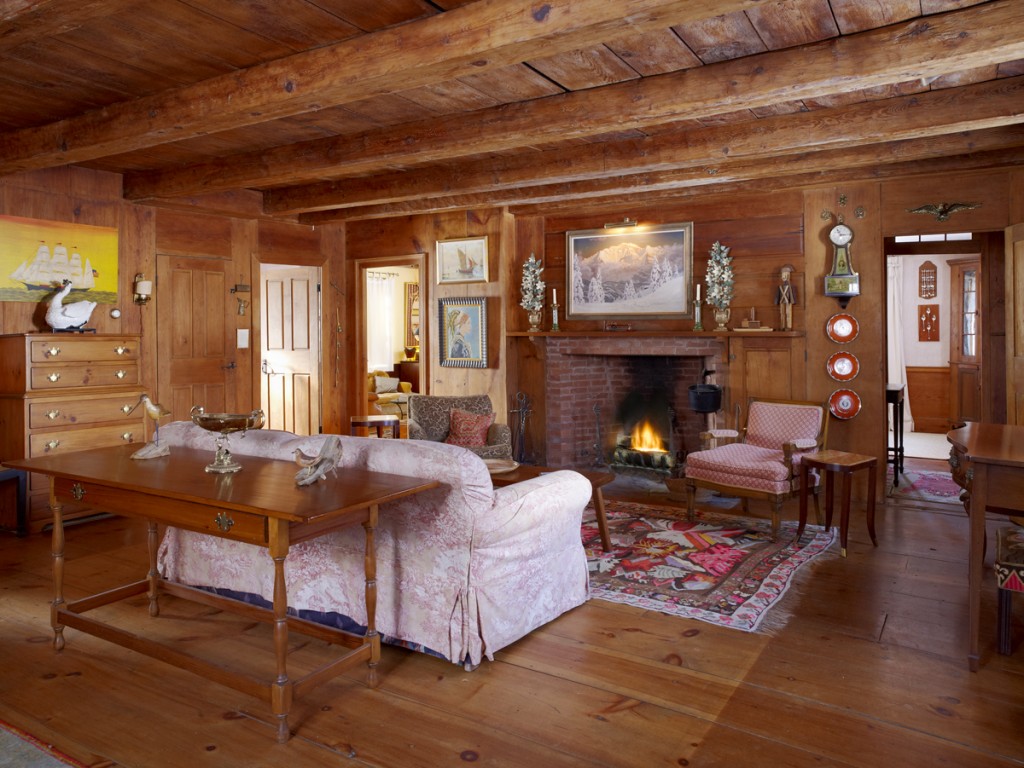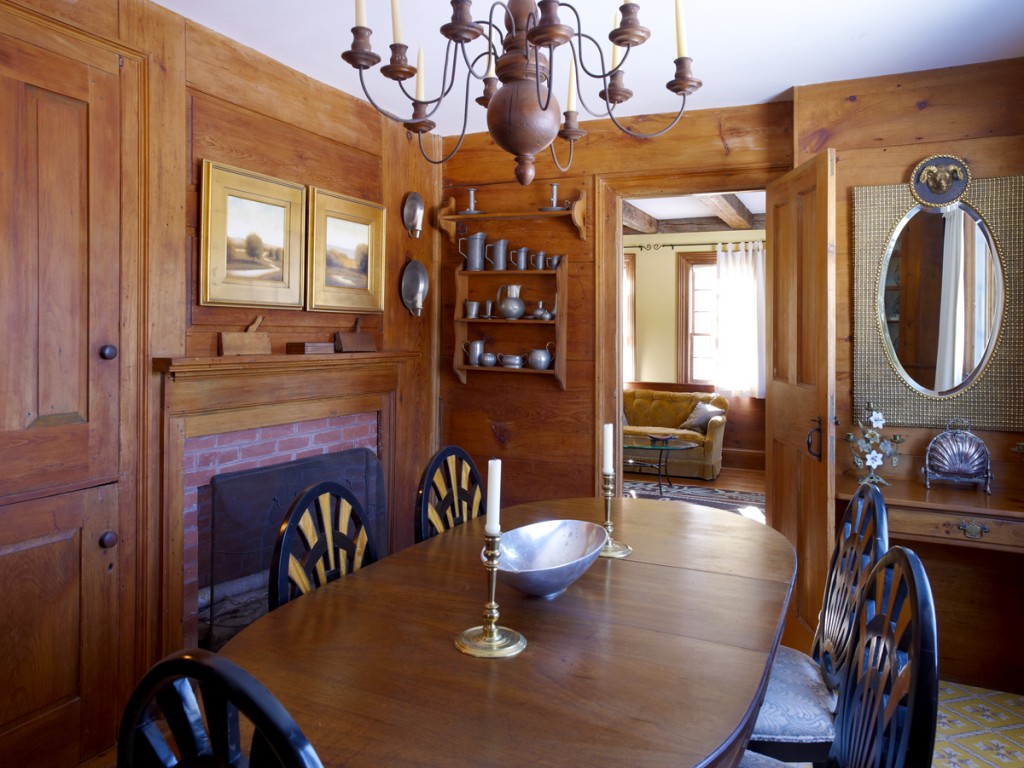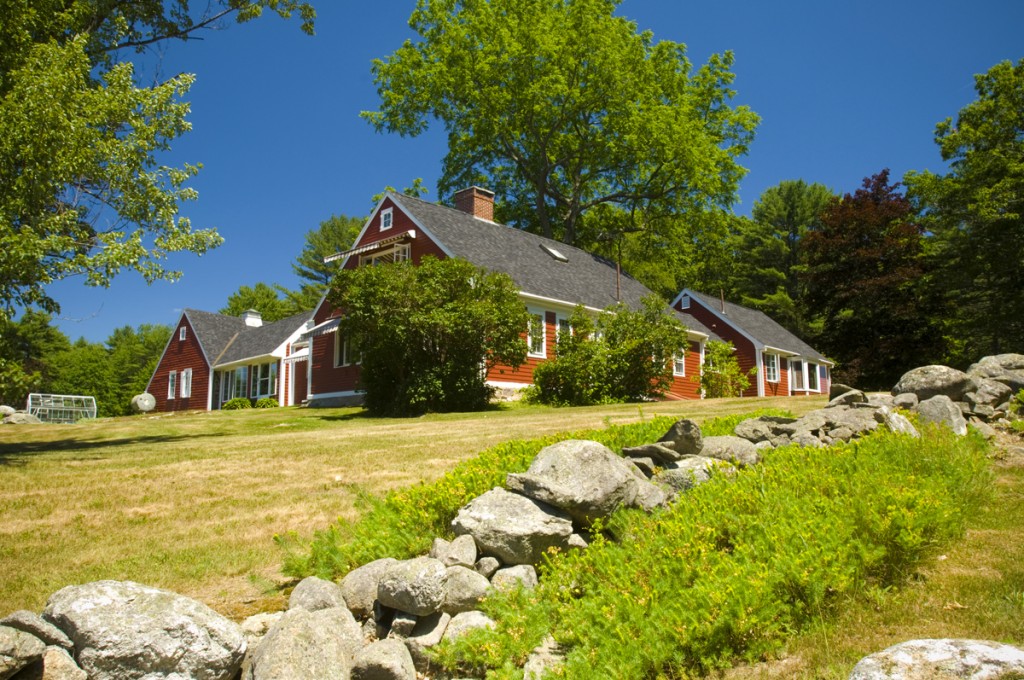
 There’s a gentleman’s farm on a peninsula in Maine so private that even only a handful of locals know about it.
There’s a gentleman’s farm on a peninsula in Maine so private that even only a handful of locals know about it.
It’s secluded and quiet. Wildlife abounds. The residence is beautiful, the guest house is private and comfortable. The guest book overflows with comments about the “magic” that visitors feel. With 133± acres and access to an idyllic freshwater pond, it truly feels like a sanctuary. It’s located only 10 minutes from the sea, and just 15 minutes from Damariscotta, a charming coastal community with all the amenities anyone could ask for.
All these things would make any property special, but what differentiates the Two Century Farm in Bristol is its place in coastal Maine history. If its stone walls could talk, they would tell the tales of Kings and Colonists and the early days of English settlement on the Pemaquid peninsula.
The original farmhouse, an extended Cape, was literally the birthplace of local government: in 1764, the Town of Bristol was incorporated in what is now the living room. Built in the mid-1700s for Simeon Jones, the house was constructed from timber felled, hand hewn and sawn on site. Today the walls are finished with rich pumpkin pine in single-board panels measuring nearly 3 feet wide. These precious pieces of “King’s Lumber”—so called because they were reserved for use solely at the prerogative of the King—are today an inimitable rarity and a testament to age-old craftsmanship. You’d never know it today, but the main road once passed right in front of this house. Local knowledge has it that at some point in the Jones family’s tenure, royal naval inspectors landed in Pemaquid to bring trees back to England. With unauthorized use of King’s Lumber being a hanging offense, the boards were swiftly plastered over. They remained hidden until the 1930s, when the plaster was stripped away to reveal the exquisitely aged wood—presumably to the great delight of the renovators.Throughout the house, pumpkin pine paneling, floors and exposed beams maintain its charming colonial character. Three rooms oriented around the large brick chimney all include their own fireplaces with tremendous character—one is set up for cooking with hanging hooks and ovens, another warms a parlor, and a third features a secret hiding place large enough for a couple of people. 
 The fact that the main road passed directly in front of the house—and that its location changed at some point—is indirectly responsible for the property’s unique and bucolic setting. Those who admire historic properties are well aware that the vast majority of 18th century properties are located on main roads—generally a real drawback given today’s traffic flow and noise. It’s highly unusual to find a home of this vintage, particularly one with so much land, in such a private setting. Once the main road was moved, the entire property became the secluded sanctuary it is today. Once you know it was there, you can see that a hint of the old road remains, a wide grassy pathway through the front yard, bordered by old stone walls.
The fact that the main road passed directly in front of the house—and that its location changed at some point—is indirectly responsible for the property’s unique and bucolic setting. Those who admire historic properties are well aware that the vast majority of 18th century properties are located on main roads—generally a real drawback given today’s traffic flow and noise. It’s highly unusual to find a home of this vintage, particularly one with so much land, in such a private setting. Once the main road was moved, the entire property became the secluded sanctuary it is today. Once you know it was there, you can see that a hint of the old road remains, a wide grassy pathway through the front yard, bordered by old stone walls.
The house is landscaped simply and unpretentiously, with perennials offering visual accents for the real focus: the historic stone walls, lawns and meadows surrounding the house. Walking trails wind past the old mill pond through the beautiful woods, and the property includes frontage on a larger pond–one big enough for fishing, swimming, and skating. A heated in-ground swimming pool is one of the concessions to modern recreation.
The historic barn was also built (ca. 1935) from timber found on the property. A classic post and beam structure, it was converted to a wonderful 1-bedroom guest house and now includes enormous multi-pane windows, a loft with a bedroom and bath, a living room with cathedral ceiling, and a modern kitchen.
When the current owner’s father purchased the property in 1963, it was love at first sight. In fact, it wasn’t even the kind of property he wanted. A yachtsman, he was seeking a waterfront property on the Pemaquid Peninsula. On a whim, his broker drove him into the farm. He was smitten, and his family became part of Two Century Farm’s history. The property has been updated over the years to conform to modern standards of comfort, but fortunately its owners have taken great care to preserve the authenticity of this historic Bristol, Maine gem.
Click here to view the complete listing for Two Century Farm.
To see other Maine coast properties, check out our Camden real estate page .
